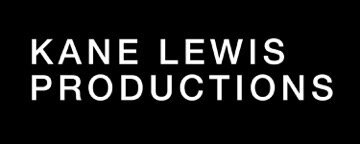Stephen Pace Paintings that Appear in the Film
Click on a painting in the list below to view or project it individually.
1. Three Islands in Fog, Stephen Pace, 1963, oil on canvas, 55x72
2. Family at Home, Stephen Pace, 1988, oil on canvas, 60x84
3. Family with Goat, Stephen Pace, 2002, watercolor on paper, 28x40.5
4. Racing Home, Stephen Pace.
5. Five Black Horses Crossing Field, Stephen Pace, 2003, oil on canvas, 32x42
6. Three Horses Alarmed, Stephen Pace, 2000, oil on canvas, 42x60
7. Four Brothers at Cornfield, Stephen Pace, 2004, watercolor on paper, 41x27
8. Three Black Horses, Stephen Pace, 2006, oil on canvas
9. Three Horses Moonstruck, Stephen Pace, 1990, oil on canvas, 30x40
10. Two Horses Encounter, Stephen Pace, 2003, oil on linen, 42x30
11. Black and White Horses Racing, Stephen Pace, 2003, watercolor on paper, 22x30
12. Shucking Corn, Stephen Pace, 1985, oil on canvas, 43x72
13. Picking Watermelon, Stephen Pace, 1985, oil on canvas, 56x84
14. Title Unknown, Stephen Pace, 1970, oil on canvas
15. Mother, early drawing, Stephen Pace.
16. Myrna Loy, early drawing, Stephen Pace.
17. Magazine Copy, early drawing, Stephen Pace.
18. Robert Lahr, early drawing, Stephen Pace.
19. Self Portrait, early drawing, Stephen Pace.
20. Pam Pace, Stephen Pace, 1985, watercolor on paper
21. Pam Pace, Stephen Pace, 2005, watercolor on paper
22. Pam Pace, Stephen Pace, 1989, woodcut
23. Bridge Over the Seine, Stephen Pace, 1945, watercolor on paper
24. French Village, Stephen Pace, 1945, watercolor on paper
25. San Miguel Village, Stephen Pace, 1946, watercolor on paper
26. San Miguel Bridge, Stephen Pace, 1946 watercolor on paper
27. Mexico, Stephen Pace, 1946, oil on canvas, 26x23
28. Title Unknown (Mexico), Stephen Pace, 1946, oil on canvas
29. 55-21, Stephen Pace, 1955, oil on canvas, 48x68
30. Pace/Lobdell Painting, Paris, Stephen Pace, 1951, oil on canvas, 76x51
31. Untitled, Stephen Pace, 1951, oil on canvas, 72x53
32. Untitled #52-52, Stephen Pace, 1952, oil on canvas, 48x32
33. Untitled #57-?, Stephen Pace, 1957, oil on canvas
34. Untitled #59-A14, Stephen Pace, 1959, oil on canvas, 59x51
35. Untitled #59-83, Stephen Pace, 1959, oil on canvas, 66x78 _
36. Untitled #54-?, Stephen Pace, 1954, oil on canvas
37. The Avery Family, Stephen Pace, 1965, oil on canvas,
38. Untitled #61-W30A, Stephen Pace, 1961, watercolor on paper, 22.5x30.75
39. Untitled #58-W12A, Stephen Pace, 1958, watercolor on paper, 22x30
40. Untitled #58-W5A, Stephen Pace, 1958, watercolor on paper, 22x30
41. Monhegan Island, Stephen Pace, 1959, watercolor on paper, 22x30.25
42. After the Drawing Session, Stephen Pace, 1973, oil on canvas, 72x92
43. Meredith in Maine, Stephen Pace, 1972, oil on canvas, 24x36
44. Front Porch with Hat, Maine, Stephen Pace, 1978, oil on canvas, 44x66
45. Apple Tree at Greenhead, Stephen Pace, 1980, oil on canvas, 45x70
46. Artist Sketching Gardener, Stephen Pace, 1981, oil on canvas, 42x70
47. Jan and Weigelia, Stephen Pace, 1990, oil on canvas, 46x34
48. Sedgwick Blueberry Fields, Stephen Pace, 1981, oil on canvas, 42x70
49. Pam with Chanterelles, Stephen Pace, 1993, oil on canvas,, 60x42
50. Genghis Grooming, Stephen Pace, 1982, oil on canvas, 18.5x12.5
51. Window Gazing with Ghengis, Stephen Pace, 1993, oil on canvas, 42x52
52. Young Artist – First Snowfall, Stephen Pace, 1983, oil on canvas, 42.5x30.5
53. Grandparents, Stephen Pace, 2007, watercolor on paper
54. Three Horses, Stephen Pace, 2007, oil on canvas
55. Grandparents, Stephen Pace, 2004, oil on canvas, 60x50
56. Downeast Couple, Stephen Pace, 1963, oil on canvas, 55X95
57. Two Clam Diggers in Green, Stephen Pace, 2001, watercolor on paper, 22x30
58. Clam Digger in Yellow and Purple, Stephen Pace, 2001, oil on canvas, 42x60
59. Lobster Fisherman, Stephen Pace, 1976, oil on canvas, 40x48
60. Selecting Lobster, Stephen Pace, 1998, oil on canvas, 30x36
61. Propping Sunflowers, Stephen Pace, 2004, oil on canvas, 48x72
62. Clam Digger at Sunset, Stephen Pace, 1984, oil on canvas, 72x90
63. Shephard House, Stephen Pace, 1972, watercolor on paper, 22x30
64. Racing Home #2, Stephen Pace, 1987, oil on canvas, 52x72
65. Pulling Lobster Traps, Stephen Pace, 1989, oil on canvas, 48.5x72.5
66. Loading from Baithouse, Stephen Pace, 1989, oil on canvas, 60x72
67. Red Schooner, Stephen Pace, 2007, watercolor on paper
68. Ames Lily Pond #2, Stephen Pace, 2002, watercolor on paper, 28x40.5
69. Title Unknown, Stephen Pace, 1991, watercolor on paper
70. At the Lily Pond, Stephen Pace, 2003, oil on canvas, 42x60











